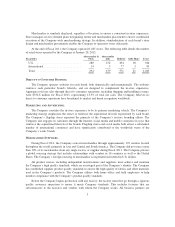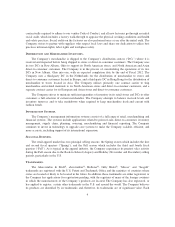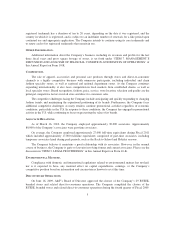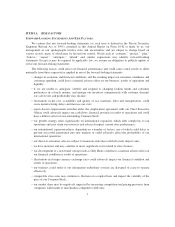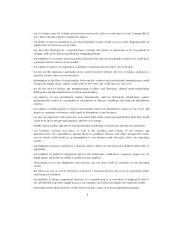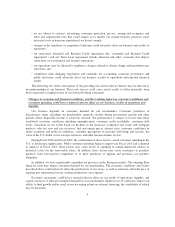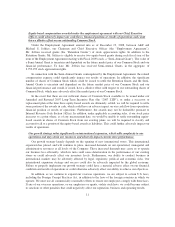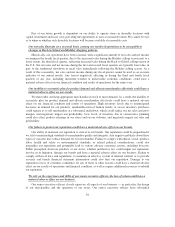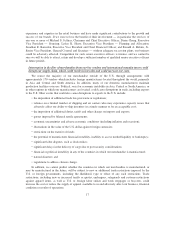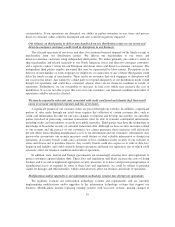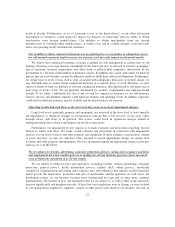Abercrombie & Fitch 2011 Annual Report Download - page 16
Download and view the complete annual report
Please find page 16 of the 2011 Abercrombie & Fitch annual report below. You can navigate through the pages in the report by either clicking on the pages listed below, or by using the keyword search tool below to find specific information within the annual report.
• credit card fraud;
• the failure of the computer systems that operate our websites and their related support systems,
including computer viruses;
• telecommunication failures and electronic break-ins and similar disruptions; and
• disruption of Internet service, whether for technical reasons or as a result of state-sponsored
censorship.
Our failure to successfully respond to these risks might adversely affect sales in our
direct-to-consumer business, as well as damage our reputation and brands.
We have incurred, and may continue to incur, significant costs related to store closures.
We may incur costs associated with store closures resulting from, among other things, lease
termination agreements associated with closing stores prior to the stores’ lease expiration date. These costs
could be significant and could have a material adverse effect on our financial condition and results of
operations. We previously announced our intention to close underperforming domestic stores, primarily
through natural lease expirations, as part of our efforts to increase domestic store productivity.
Our development of a new brand concept such as Gilly Hicks could have a material adverse effect on
our financial condition or results of operations.
Historically, we have developed and launched new brands internally that have contributed to our sales
growth. Our most recent brand, Gilly Hicks, offers bras, underwear, personal care products, sleepwear and
at-home products for girls. The development of new brand concepts such as Gilly Hicks requires
management’s focus and attention, as well as significant capital investments. Furthermore, a new brand
concept is susceptible to risks, including lack of customer acceptance, competition from existing or new
retailers, product differentiation, production and distribution inefficiencies and unanticipated operating
issues. There is no assurance that a new brand concept, including Gilly Hicks, will achieve successful
results. The failure of Gilly Hicks to be launched successfully, and to achieve profitability, could have a
material adverse effect on our financial condition and results of operations. The costs of exiting a brand are
significant. In Fiscal 2009, we incurred pre-tax exit costs of $56.1 million and pre-tax impairment charges
of $51.5 million associated with the closure of RUEHL. In addition, the ongoing development of new
concepts may place a strain on available resources.
Fluctuations in foreign currency exchange rates could adversely impact our financial condition and
results of operations.
The functional currency of our international subsidiaries is generally the local currency in which each
operates, which includes British Pounds, Canadian Dollars, Chinese Yuan, Danish Kroner, Euros, Hong
Kong Dollars, Japanese Yen, Singapore Dollars, Swedish Kronor and Swiss Francs. Our consolidated
financial statements are presented in U.S. dollars. Therefore, we must translate revenues, expenses, assets
and liabilities from functional currencies into U.S. dollars at exchange rates in effect during, or at the end
of the reporting period. In addition, our international subsidiaries transact in currencies other than their
functional currency, including intercompany transactions, which could result in foreign currency
transaction gains or losses. The fluctuation in the value of the U.S. dollar against other currencies could
impact our financial results.
13


